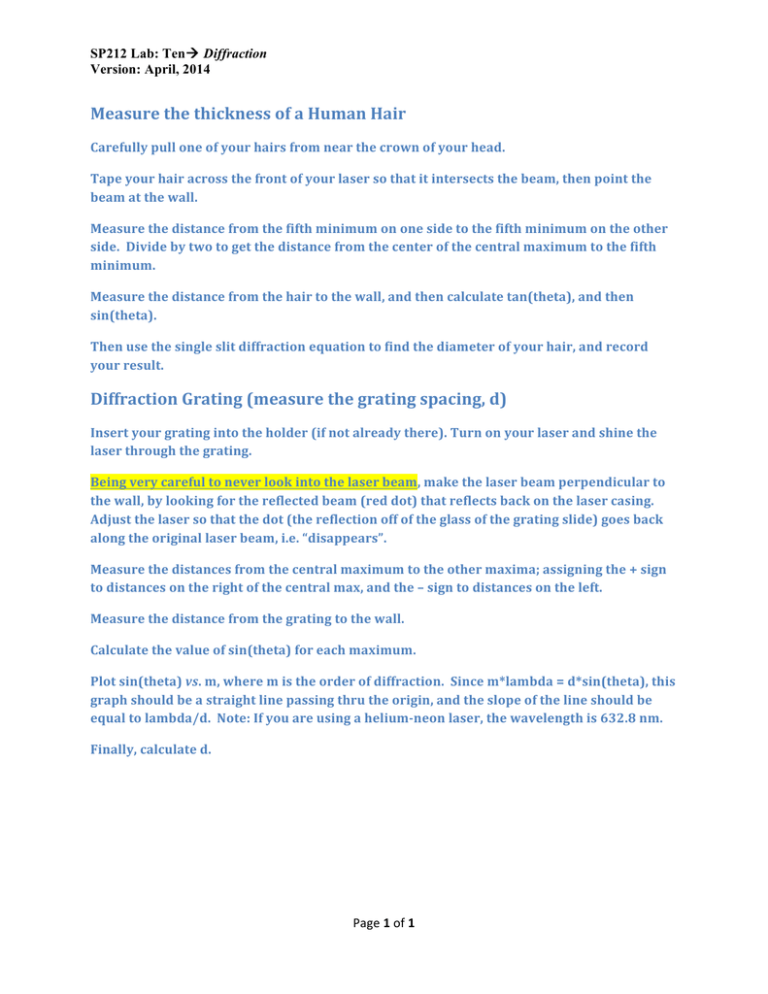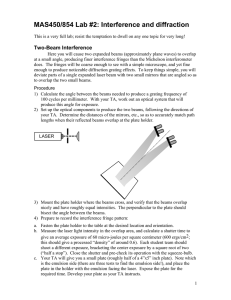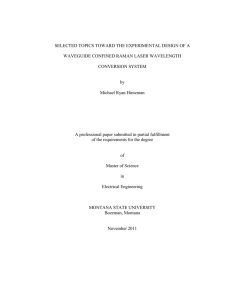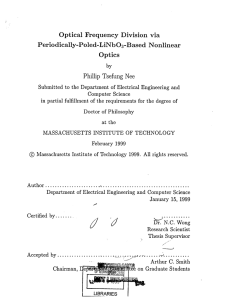Document 11118894
advertisement

SP212 Lab: Tenà Diffraction Version: April, 2014 Measure the thickness of a Human Hair Carefully pull one of your hairs from near the crown of your head. Tape your hair across the front of your laser so that it intersects the beam, then point the beam at the wall. Measure the distance from the fifth minimum on one side to the fifth minimum on the other side. Divide by two to get the distance from the center of the central maximum to the fifth minimum. Measure the distance from the hair to the wall, and then calculate tan(theta), and then sin(theta). Then use the single slit diffraction equation to find the diameter of your hair, and record your result. Diffraction Grating (measure the grating spacing, d) Insert your grating into the holder (if not already there). Turn on your laser and shine the laser through the grating. Being very careful to never look into the laser beam, make the laser beam perpendicular to the wall, by looking for the reflected beam (red dot) that reflects back on the laser casing. Adjust the laser so that the dot (the reflection off of the glass of the grating slide) goes back along the original laser beam, i.e. “disappears”. Measure the distances from the central maximum to the other maxima; assigning the + sign to distances on the right of the central max, and the – sign to distances on the left. Measure the distance from the grating to the wall. Calculate the value of sin(theta) for each maximum. Plot sin(theta) vs. m, where m is the order of diffraction. Since m*lambda = d*sin(theta), this graph should be a straight line passing thru the origin, and the slope of the line should be equal to lambda/d. Note: If you are using a helium-­‐neon laser, the wavelength is 632.8 nm. Finally, calculate d. Page 1 of 1








